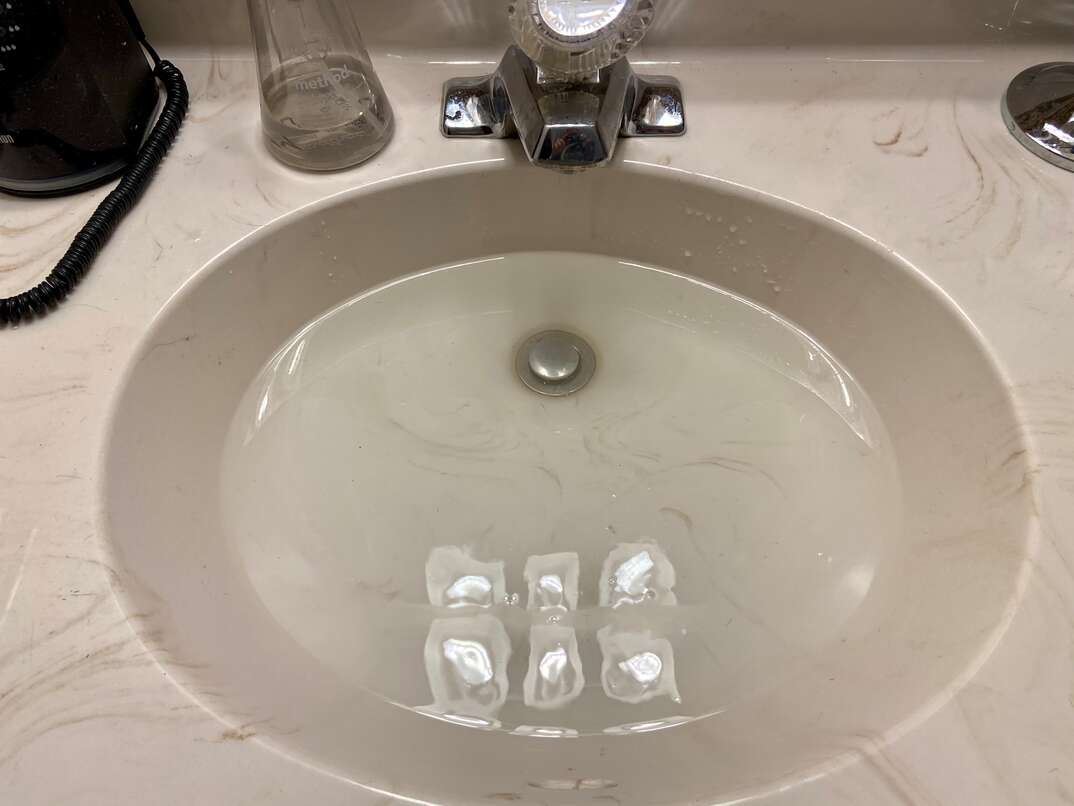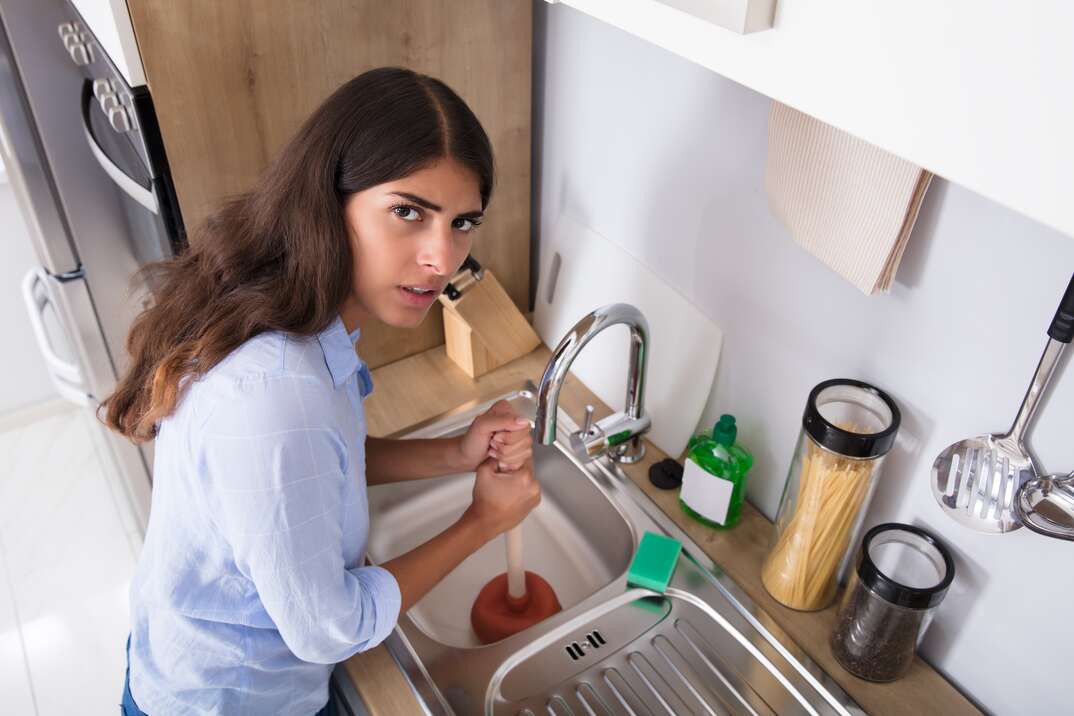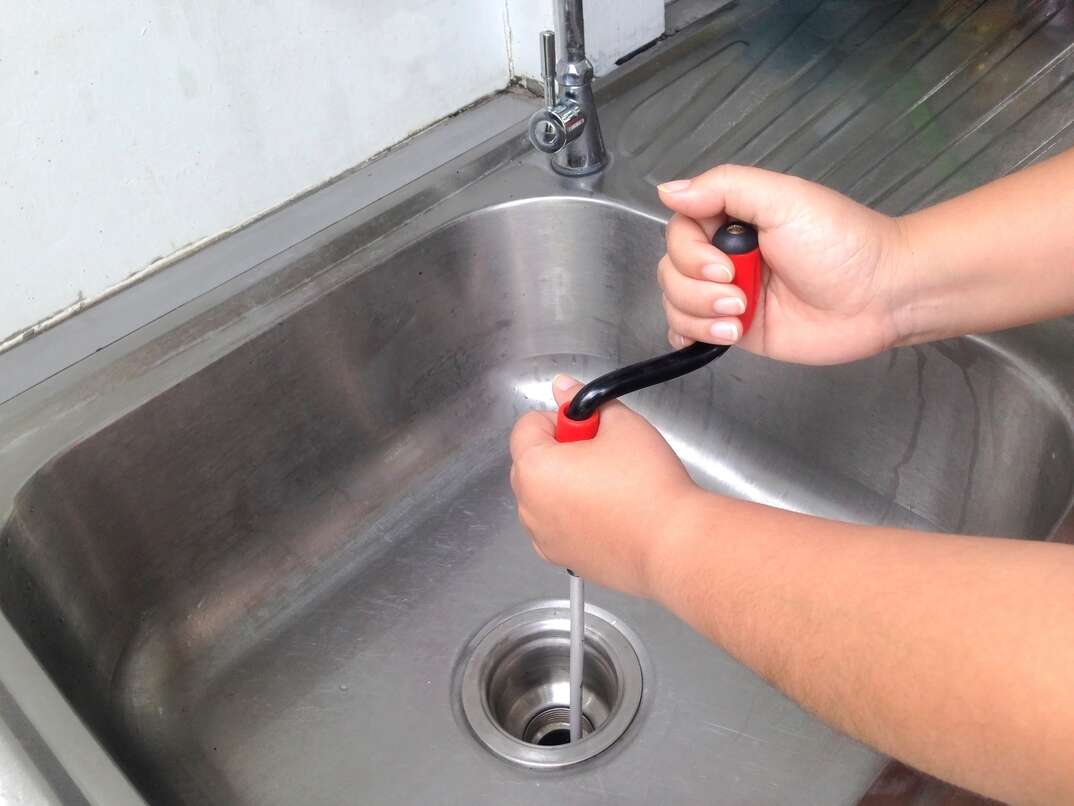Got a Stopped-up Sink With a Sink Stopper? Pull Out All the Stops

Slow drains can be a hassle. You're brushing your teeth or washing your face and notice the water isn't draining from the sink as fast as it's flowing in. You don't want to stand there and wait for the sink to empty just so you can wash your hands. And if you're not careful, a slow drain could lead to leaks and overflows in the future. It’d be easy enough if you could just look down the drain to locate the obstruction, but many bathroom sinks have stoppers that make them more difficult to unclog.
This May Also Interest You: Snake’s in a Drain! How to Unclog Your Sink With a Drain Snake
Got a stopped-up sink with a sink stopper? Here’s how to remove both the drain stopper and the clog.
Common Reasons for Bathroom Sink Clogs
What’s causing your bathroom sink to clog in the first place? One of the most common culprits is hair. If you shave or cut your hair at the bathroom sink, hair can be washed down the drain. There, it clumps together and, eventually, causes clogs. Even if you don't intentionally rinse hair down the sink, hair that falls out or breaks naturally during the process of brushing or styling can eventually collect in the plumbing below the sink.
Other common reasons for bathroom clogs include:
- Soap and soap scum buildup
- Dried or clumped product, including toothpaste
- Small items stuck in the P-trap
 -------------------------------------------
-------------------------------------------
First, Remove the Stopper...
To unclog your sink, you'll need to remove the bathroom sink stopper. Sometimes, the stopper is helping to form the clog, and by removing it, you may pull up or release some of the gunk that's causing the slow drain.
Start by pulling by hand or turning the stopper. Some are made to be easily removed. If that's not the case, you may need to use some tools and unfasten or unscrew the part holding the stopper in place under the sink. Here’s what to do:
- Locate a horizontal rod and stopper strap under the sink. The vertical strap is a metal strip with holes in it.
- Find the clip that holds these two pieces together. Take off the clip, but keep it close by. You'll need it to put everything back together.
- Look for the nut attached to the rod and unscrew it. Water may come out when you do this, so put a container underneath the sink to catch it. At this point, you should be able to remove the stopper.
…Then Tackle the Clog
Some of these methods to unclog the bathroom sink will require that you remove the stopper. Others can be tried without going through that step.
Boiling Water
Boiling water can clear some clogs, especially those created by buildup or soap. Hot water dissolves grease and other solids so they can be pushed out of your pipes. Make sure the sink is empty and pour boiling water from a pot or kettle slowly down the drain. You can try this without removing the stopper. This can also work on some clogs in your kitchen sink.
Before you try this method, double check that your pipes are made of metal and not PVC; the boiling water may melt PVC pipes. Also, try not to pour the hot water directly onto the surface of your sink. Porcelain sinks may crack due to the abrupt temperature change.

Use a Plunger
The plunger is something you can try when you're working to unclog any drain. You can attempt this fix with the stopper in place, but it's going to work best without the stopper in the way. Simply place the plunger over the drain and create a seal. Then, push the plunger up and down quickly a few times. This creates a force in the pipe that can push or pull a clog loose.
More Related Articles:
- How to Clear a Clogged Drain
- 5 Plumbing Myths Every Homeowner Should Know
- How to Unclog a Shower Drain
- How to Fix a Clogged Toilet
- The Do’s and Don’ts of DIY Drain Repair
Natural Products
Pouring a mixture of baking soda and vinegar down the sink can help dissolve some clogs. You may also be able to purchase drain cleaning products at the store for this purpose. As long as you can get some of these products down your drain to begin with — i.e., there’s no physical obstruction or standing water — you don't need to remove the stopper.

Snake the Pipe
Remove the P-trap from below your sink and look for any visible clogs. Then, you can use a drain snake or even a straightened wire coat hanger to push the clog out from above. Usually, you have to remove the stopper to do this, but you might be able to get a thin pipe snake down the drain without doing so. Put a large bowl or bucket under the sink to catch any water.
When Should You Call a Professional About Your Clog?
Many clogs can be handled with these and other DIY measures, especially if you have a little bit of plumbing knowledge. The above tips, for example, can also be used to unclog bathroom drains or deal with similar issues in the kitchen.
But not all issues can be attacked with a pot of boiling water or a plunger. If you're dealing with something like a clogged sewer line or a clog your drain snake can’t reach, you may need to call in a professional. Ignoring the clog could lead to even more expensive repairs later on. Standing water may cause moisture damage, mold or even nastier problems.
Since we’re all home now more than ever, being prepared for unexpected home repairs with a plan from HomeServe is important. Having a plan in place gives you peace of mind knowing that you can simply call our 24/7 repair hotline for covered breakdowns. See what plans are available in your neighborhood.


